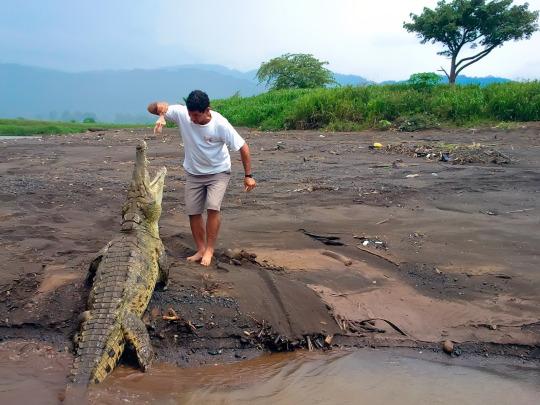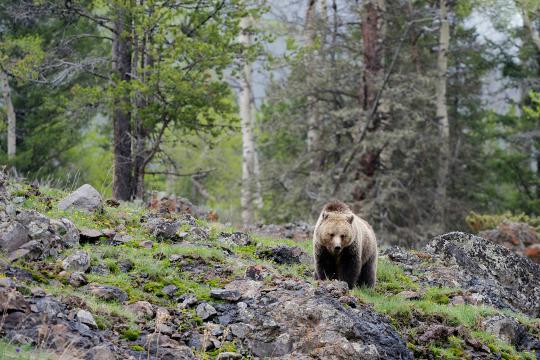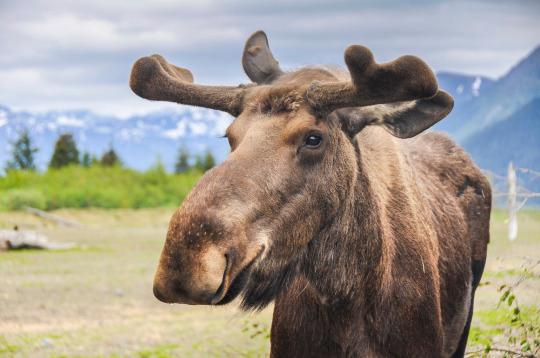
Photo: Thinkstock
All in the last few weeks, a lion escaped from a park in South Africa, zoo animals were on the lose in Tbilisi, Georgia, and there was a fatal lion attack of an American within a South African game park — there have also been buffalo-gorings, moose-stompings, and bear-maulings happening
with alarming regularity in within the United States. So the question
is, who is at fault: the safari companies, park operators, and
government agencies who make this wildlife too easily accessible to
civilians unfamiliar with the dangers, or does the fault lie with
tourists who ignore the warnings, risks, and common sense to do idiotic
things like posing for a selfie in front of a charging elephant?
The danger of wildlife parks
With
increased access to some of the world’s most remote and wild
destinations, people are getting up close and personal with wildlife at
levels never seen before — in more exotic, more experiential, and potentially more dangerous trips. What was once the exclusive domain of Stanley and Livingstone
on multi-year massive expeditions to darkest Africa now just requires a
couple of clicks on a website, and presto, you’re within paw’s reach of
a lion.
Book
a safari, or visit a wildlife park, and you’ll likely be handed a few
pages of fine print with warnings and disclaimers about your trip. Many
people will sign these without looking too carefully. But to what extent
do tour operators properly brief their customers and visitors about the
dangers, and then enforce these safety regulations?

Photo: Krysia Campos/Getty Images
Particularly
in third-world countries, rules can be bent on behalf of visitors with
ready cash. For example, when I visited Komodo Island in Indonesia,
someone in our group tipped the Park Ranger five dollars to go over and
whack a 12-foot long komodo dragon with a stick to get it to move, which
he did with no hesitation (fortunately — or not — the guy who gave the
tip was not eaten). In Myanmar, a tour operator told me of visiting
Russian oligarchs who didn’t want their trip cancelled for safety
concerns. The Russians pulled out a handful of hundred dollar bills and
asked the guide “what will it cost for you to declare this trip is now
safe.” Not all tour operators would resist such offers.
As
a traveler, you don’t need to be completely paranoid about making a
trip to an area with wildlife. Select a well-known tour operator with a
record of safety — for country-by-country safari safety advice, look at
a safari consolidator
website to see their latest recommendations, as well as the latest
updates from the U.S. Department of State. For tour operators, check to
see if a tour company is a registered member of the U.S. Tour Operators Association, or the Adventure Travel Trade Association, and scan reviews at customer websites like TripAdvisor.
Then
follow directions closely — just because you’re an Eagle Scout and
expert in backwoods hunting in Wyoming doesn’t mean you know the first
thing about dealing with deadly snakes in Australia or spiders in the
Amazon.

While
there are plenty of bears in Yellowstone, you’re far more likely to die
in a traffic accident at the park than via bear attack.
(Photo: 167/Barrett Hedges/Ocean/Corbis)
The
reality is that animal attacks are very rare given the number of people
visiting the areas. In fact, the most deadly thing in U.S. National
Parks, according to one report,
is the traffic: While Yellowstone had gone 25 years without a fatal
bear attack, during the same 1986-2010 period 20 people died in traffic
accidents there. During busy summer months, three people every day have
to be airlifted out of the park after car crashes. So it turns out,
despite the many ways by which one can die in Yellowstone, the most essential survival tool isn’t bear spray, it’s a seat belt.
The Danger of People

Photo: Robert Landau/Corbis
Yellowstone spokeswoman Amy Bartlett has implored people just to “use common sense”
when dealing with wildlife. “Just because the animal is near the trail
or boardwalk doesn’t mean it’s tame,” she told the Associated Press in
an interview. Because particularly in well-traveled U.S. National Parks,
the occurrence of foolishness is high. The combination of easy access
to wildlife for the uneducated, and the seemingly docile nature of
grazers like moose and bison leads to all-to-common death or injury as
people leave the protection of their vehicles to take photos near these
animals.
Traci
Weaver, Public Affairs Officer for Yellowstone National Park told Yahoo
Travel that even though the park does its best to educate visitors
about animal danger with signs, brochures and ranger lectures, mishaps
like the bison goring happen because “unfortunately some people can’t
conceptualize these are wild animals because they look so tame."
While
Yellowstone is committed to the National Park Service mission of
allowing people open access to nature, there are limits: after the
recent viral video
showing bears chasing tourists across a bridge at Yellowstone, the Park
Service has declared the bridge off-limits to pedestrians. “Bears and
bison regularly use this bridge to cross the river, and people can get
trapped and hurt out there, so we’ve posted ‘vehicle only’ signs,” said
Weaver.
And
if people continue to ignore these warning signs and try to pet the
bison? “Well, once a goring or some kind of animal attack gets in the
news, we do see people getting a lot more cautious,” Weaver added, “but
we’re going to keep doing our best to educate everyone and try to
prevent that from happening.”

Photo: iStock
Up in Alaska, Denali Park Spokeswoman Kathleen Kelly, told the Fairbanks News Miner
that after a couple of moose attacks on people: "We’re focused on
managing the visitors rather than trying to manage the moose at this
point. We’re really trying to send out a message on how to behave around
wildlife.”
And
that’s your safari safety program in a nutshell: listen to the messages
from the experts about how to act when close to wild animals. Not only
will this you help to ensure the safety of yourself and those around
you, but responsible behavior will keep the parks from having to fence
off every meadow, mountain and forest to protect everyone against the
foolish impulses of the few.
No comments:
Post a Comment